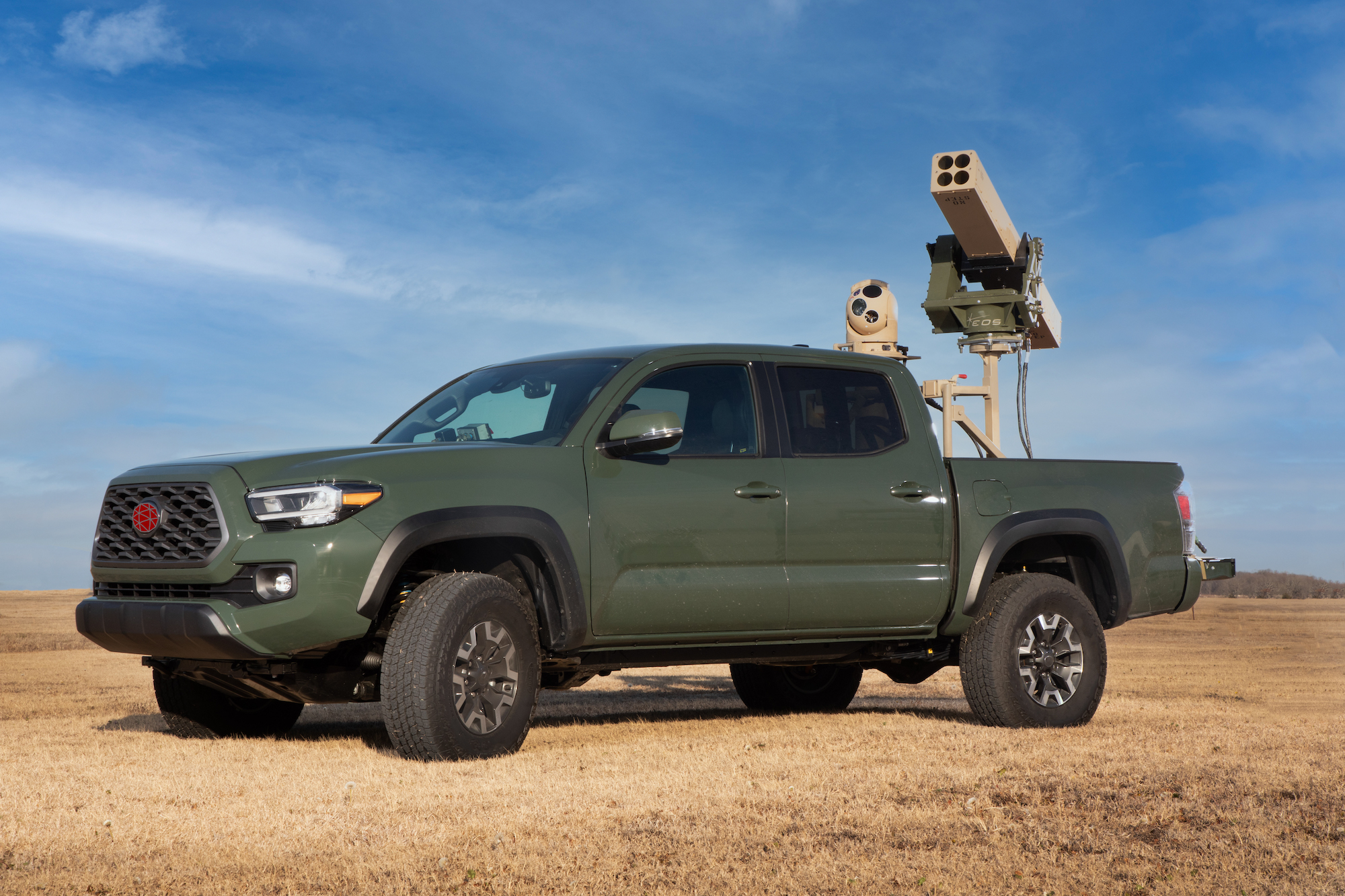

On August 24, the Department of Defense announced it would be sending anti-drone weapons called VAMPIREs to Ukraine. The announcement of the VAMPIRE came in a larger, nearly $3 billion package of assistance from the United States to Ukraine as it fights against Russia’s invasion. The inclusion of VAMPIRE highlights the major role that drones are playing in the war, and the challenge of fighting against them without having specialized weapons.
The shape of the war is reflected in the other weapons included in the package. The US is sending up to 245,000 rounds of 155mm artillery ammunition and up to 65,000 rounds of 120mm mortar ammunition, weapons that emphasize how much of the present conflict is an artillery fight. The 155mm artillery rounds, fired by US- and NATO-supplied howitzers, can duel with Russian artillery, while the mortar rounds let soldiers on foot attack enemy defenses from behind hills or otherwise out of sight. Paired with the artillery are two dozen counter-artillery radars, allowing better targeting in artillery duels.
The other half of the package is all drone- or counter-drone related. VAMPIRE is the headlining system, which combines a sensor with an anti-drone missile launcher that can mount on a range of vehicles, but it’s hardly the only counter-drone system in the package. Beyond an unspecified number of VAMPIRE systems, the August 24 announcement included six additional National Advanced Surface-to-Air Missile Systems, a kind of anti-air missile system already in use in Ukraine, along with ammunition to match. The package includes laser-guided rocket systems, confirmed to be Advanced Precision Kill Weapon System II rockets, which have been tested against drones. The drones included are Pumas and Scan Eagles, which can be launched without runways and give forces on the ground a better sense of where enemies and their artillery are.

What is the VAMPIRE counter-drone system?
Colin Kahl, Under Secretary of Defense for Policy, described the VAMPIRE as a kinetic system that uses small missiles to shoot drones out of the sky. Many counter-drone systems use electromagnetic interference or jamming to disrupt the way a drone flies and communicates remotely with a human operator, but destroying the drone outright is a straightforward solution.
Made by L3Harris, VAMPIRE stands for Vehicle-Agnostic Modular Palletized ISR Rocket Equipment. “Vehicle-Agnostic” means it can go in multiple vehicles, and L3Harris’ site shows the system mounted in the bed of a crew-cab truck. Civilian vehicles are abundant and often modified for war. When weapons are mounted on such a vehicle, it becomes a “technical,” and the popularity of Toyota Hi-Lux trucks as technicals has led to the whole category of insurgency-by-truck being dubbed “Toyota Wars.”
Modular and palletized both refer to how the VAMPIRE can be transported and modified, and that the system includes its own power supply. ISR is “intelligence, surveillance, and reconnaissance,” and in the case of VAMPIRE refers to the specific camera pod attached to the system. This camera pod, made by L3 Harris, includes a thermal sensor, optical camera, low-light optical camera, laser rangefinder, and a laser target marker to guide the laser-guided rockets. This sensor system can also include image processing, feature recognition, and video tracking, all of which are features that could enable it to see and track drones in flight.
What will the VAMPIRE hunt?
Drones are extensively used by both sides fighting in Ukraine. Before the invasion, Russia prepared with dedicated military drones to act as scouts and, especially, as spotters for artillery. Since the invasion, both forces have used drones extensively, with Ukraine using bomb and rocket-armed Bayraktar TB2 drones to strike Russian forces and record footage of the act.
As the war progressed, and initial stockpiles of machines and weapons depleted through use or destruction, both Ukrainian and Russian forces turned increasingly to other drone supplies. The United States, as well as NATO allies, continue to supply Ukraine with scout-and-spotter drones like the Pumas and Scan Eagles included in the latest package, as well as armed drone-missiles like the Switchblade and Phoenix Ghost.
Russia has turned to Iran for extra drone supplies, and provincial governments in Russia have even redirected funds to purchase hobbyist, commercial drones so that their soldiers can go into battle with quadcopter scouts equal to the numbers used by Ukrainian soldiers. Hobbyist quadcopters are so in-demand militarily that Russia is formally training volunteer drone pilots. These drones are much cheaper than dedicated military models, with limited range and more vulnerable to jamming or other kinds of electronic warfare.
A Mavic quadcopter can cost around $400, and the laser-guided rockets fired by VAMPIRE can cost $27,500 apiece, a disparity that suggests VAMPIRE will instead be hunting more specific military models like Orlan-10 and Orion drones, as well as other aircraft. Larger Iranian-made Mohajer-6 and Shahed drones, now in Russian service, are also likely VAMPIRE targets.
But in the context of the broader artillery duel in Ukraine, and with Ukrainian forces launching a counter-offensive to retake the Russian-held city of Kherson on the mouth of the Dnipro river, the ability to destroy artillery spotters in the form of drones in flight could save lives and preserve the advance. Brought into the open, VAMPIRE shows that modern counter-drone weapons are no longer kept in the shadows.
